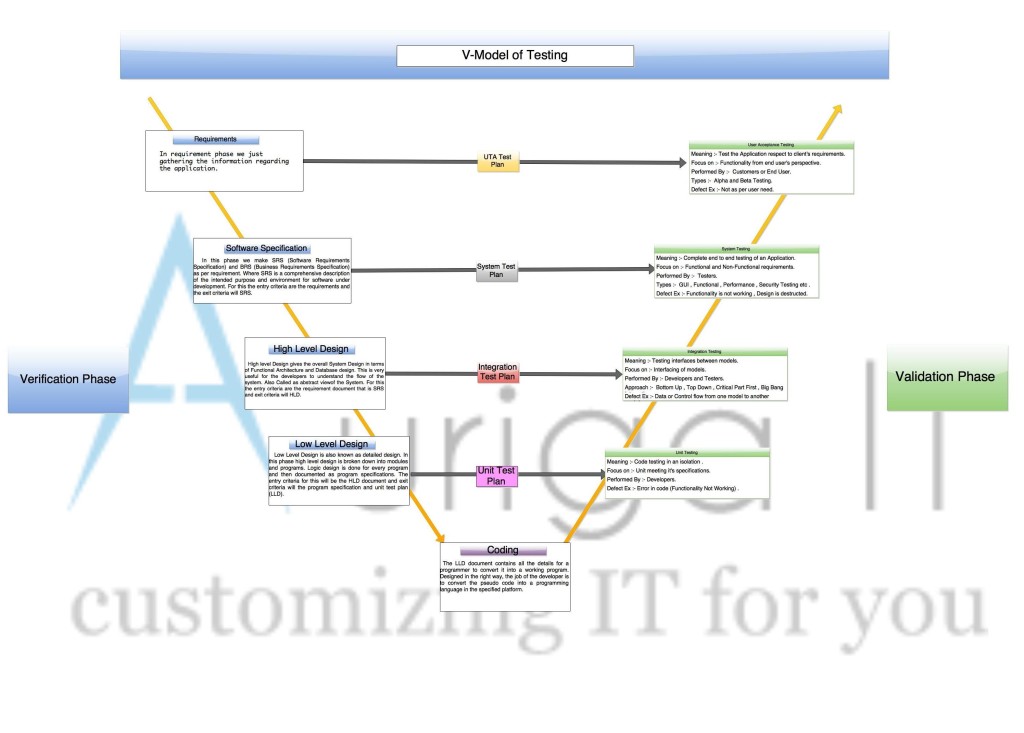V Model of Testing
- Quality Engineering
V Model of Testing
To understand the V model, let’s first understand what is verification and validation in software.
Verification:-
“The process of evaluating documents / work-product of a development phase.”
Verification is also known as Static Testing as Software Application is not actually used or executed but the documents or code is checked statically to find the defects.
Methods of Verification :-
1. Walk through :- It’s generally an informal process, initiated by the author of the document. It’s done mainly with the objective of providing information and gathering suggestions for improvement .
2. Review :- This is a formal method or planned activity for conducting verification. It uses well defined process to find the defects.
Validation :-
“The process of evaluating software application during or at the end of the development process.”
Validation is also called as Dynamic Testing as the application is actually used to test and find the defects. Methods of Validation include functional and non-functional testing techniques.
V-Model:-
V- model means Verification and Validation model.It’s an extension of waterfall model. The left arm of V-model is a conventional waterfall model of the development and right arm represents corresponding validation or testing levels. Deliverable of each phase shown on left arm undergoes verification. Validation is conducted at different levels namely Unit, Integration, System and Acceptance testing. Each phase of development provides input to the respective test plan used in Validation. For Example :- Acceptance test plan can be made ready once user requirements are captured and verified.
Testing of the product is planned in parallel with a corresponding phase of development. Like – Each Verification activity such as Requirement Specification Verification, Functional design Verification etc has its corresponding validation activity such as Functional Validation or Testing, Unit Testing, System testing etc.
